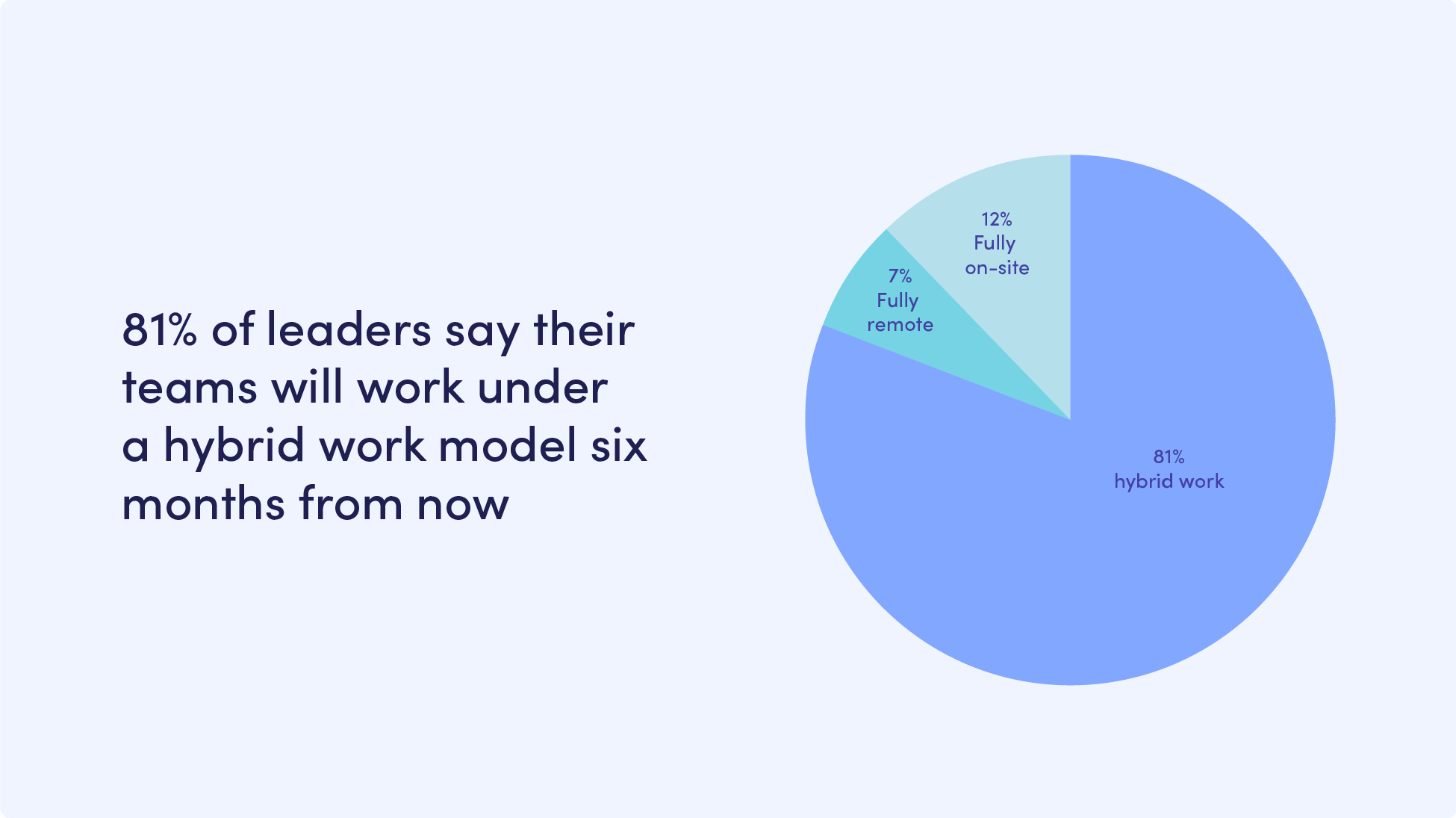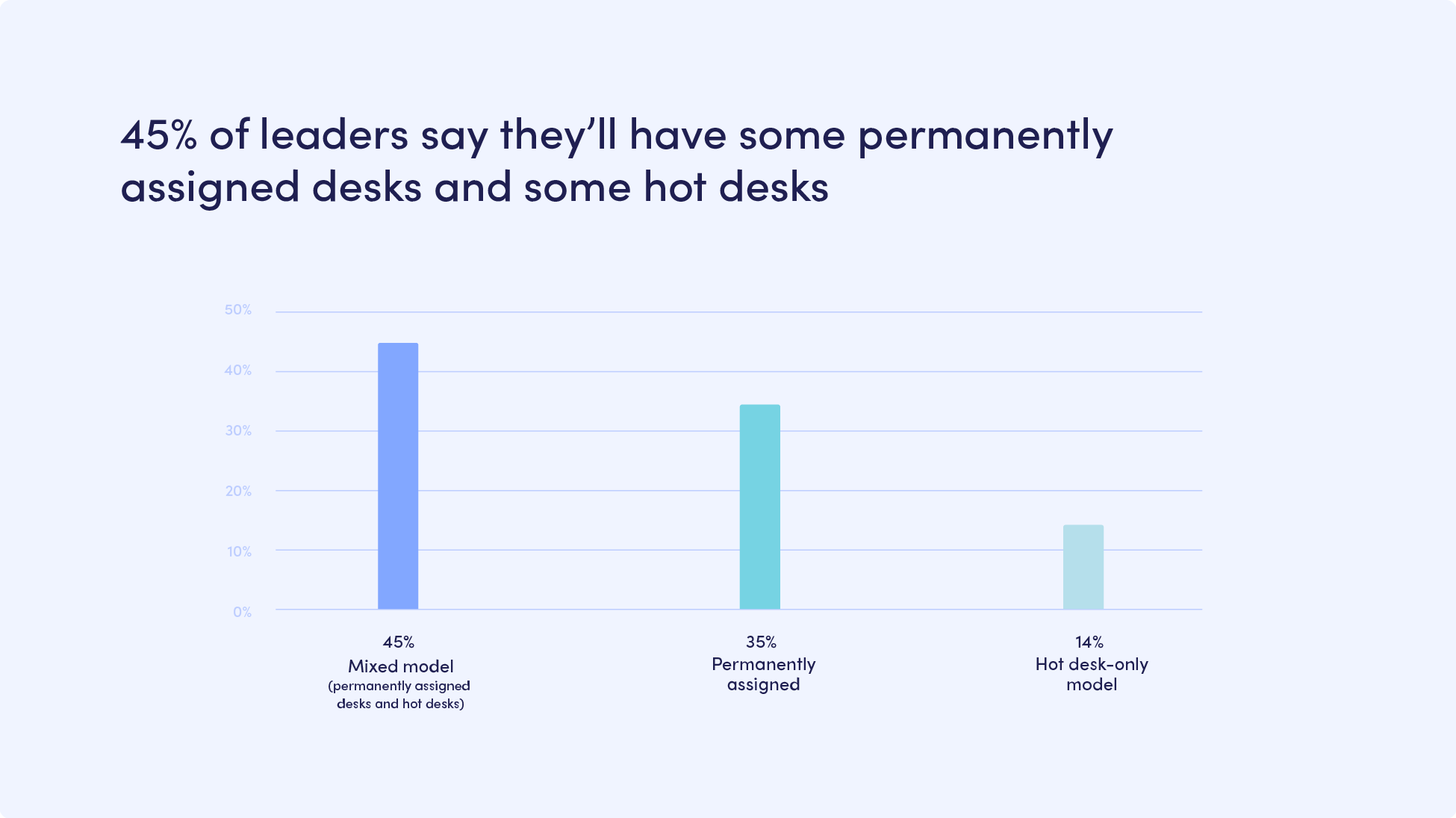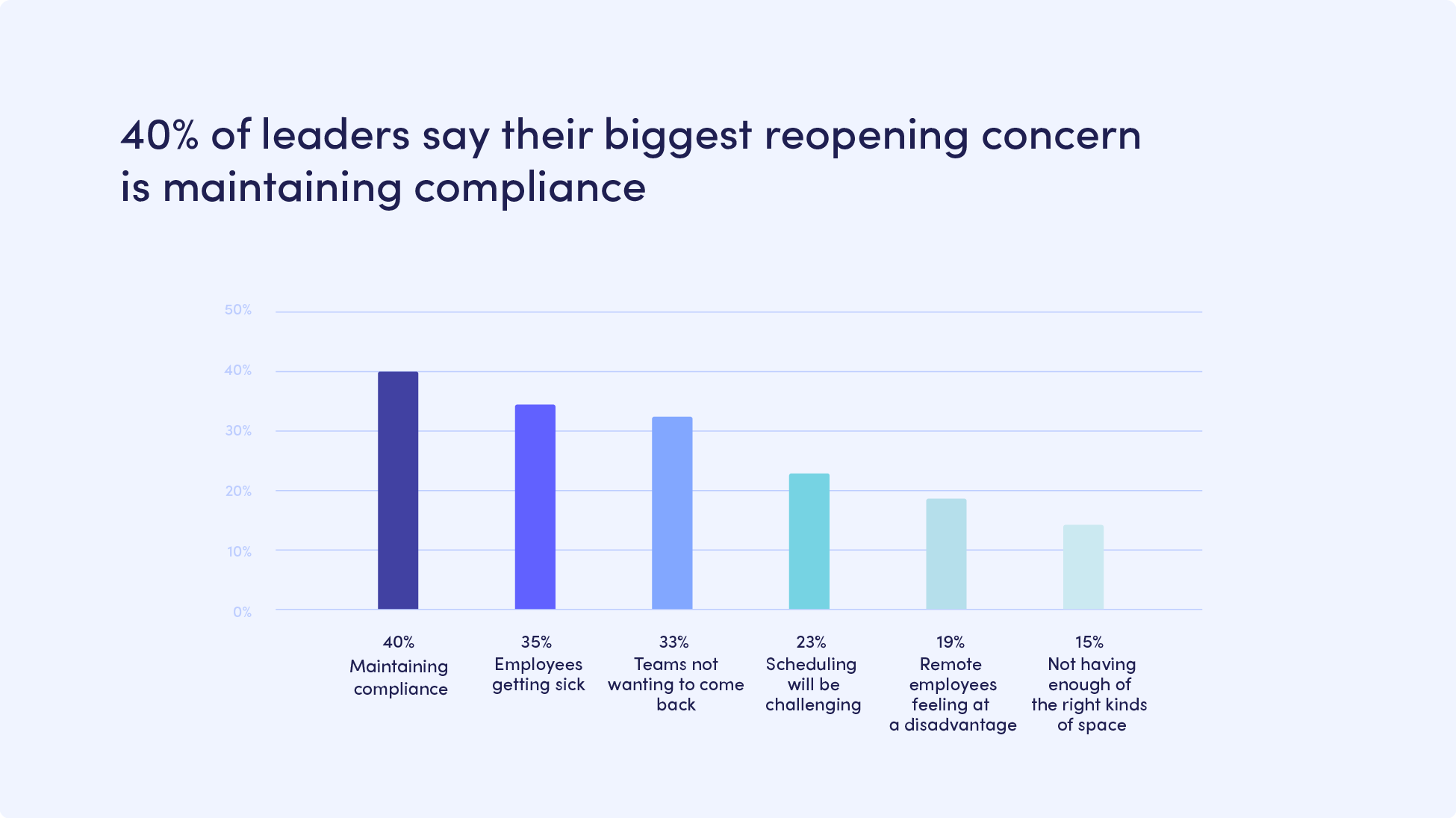All around the world, companies are envisioning what our new normal will look like as we emerge from the pandemic. For many of us, what we return to will look different than what we left. After months of discussion and hypothesizing, many companies have started to welcome their people back to the workplace.
To get a pulse check on how forward-thinking companies are approaching this shift, we surveyed more than 800 workplace leaders from around the world. We also surveyed 1,000 US employees to understand the employee perspective on these issues. Let’s take a look at what we learned.
Moving toward hybrid work
We surveyed workplace leaders at companies that have employees who can easily work remotely and employees who need to be on-site to do their work. 40% of these leaders said that their teams are currently working under a hybrid work model—spending some of the workweek on-site and some remotely. When we asked the leaders where they expect their teams to work six months from now, 68% said they expect to have a hybrid work setup. This reflects the desire for flexible working options that many employees want post-pandemic. For companies where the majority of employees can do their work from home, 81% of leaders said their teams will work in a hybrid model six months from now. Almost 7% of those leaders said their teams will be fully remote, and 12% said their teams would be back in the workplace full-time. The driving force behind the move to hybrid work? According to 69% of leaders, their employees told them they prefer a hybrid work model.

Are employers worried about how hybrid work might impact productivity? Not really. 80% of workplace leaders told us they don’t believe employees who prefer remote work are any less engaged or productive than those who prefer to work on-site. But, when we asked employees the same question, 55% said they believed those who prefer remote work are less engaged and productive than those who prefer to work on-site. What does this tell us? Putting practices and guidelines in place to keep companies equitable for all employees will be critical.
Redesigning the workplace for hybrid work
Workplace leaders are taking this opportunity to make adjustments to their workplace to suit the shift toward hybrid work. Here’s what we learned when we asked leaders how they plan to design their hybrid workplace.
- 45% said they’re transitioning to a mixed model with some permanently assigned desks and some hot desks.
- 14% of all surveyed said they’re transitioning to a full hot-desking model, without any permanently assigned seating.
- 18% of leaders said they reduced the number of desks altogether and have added more meeting spaces to accommodate the workplace’s new purpose as a center for collaboration.

What do employees think about hot-desking? Not all are fans of hot-desking as a practice—or at least of the previous notion of hot-desking. Here’s what we learned from leaders:
- 23% reported that employees at their company are resistant to the idea of hot-desking and would prefer their own desk.
- 19% said employee sentiment around hot-desking is neutral.
- 10% said employees at their company are embracing a hot-desking model.
When we asked employees directly, 33% said they like hot-desking, and 27% said they dislike hot-desking. It will be up to workplace leaders to establish hot-desking practices that help dispel employees’ grievances. This will help them make better use of their space while ensuring their employees have the flexibility they desire.
Understanding workplace leaders’ priorities and concerns
When asked about their top priorities, workplace leaders overwhelmingly said keeping employees safe from virus transmission, and following the CDC and local guidelines was most important. 75% of all workplace leaders stated safety as their primary goal. But what about beyond ensuring safety? Workplace leaders said fostering company culture and community was their second priority. Their third priority was ensuring that the workplace is equitable and inclusive for all employees.

We asked employees to rank what they’d like their leadership teams to prioritize. The results mirrored what workplace leaders said. Safety is a top priority. That’s followed by re-establishing a sense of belonging, creating an equitable workplace, and restoring pre-pandemic productivity.
A new era for workplaces
Workplace leaders shared that there are big changes on the horizon for workplaces. Companies will continue to move away from the five-day on-site workweek. And that will have far-reaching implications on their hybrid workforce’s professional and personal lives. To get the most out of a hybrid work model, leaders need to establish workplace practices. They should also remain nimble as they iron out the kinks of hybrid for their company and its employees.
Want to learn more about how to help your employees thrive in a hybrid work model? Download our ebook, How to identify and solve hybrid work challenges.
Read more
Searching for a visitor management solution? Learn what to look out for and how to choose the best tech for your team.
Managing your space well doesn’t have to be difficult. But if you want to be successful, you need the right approach.
A well-run workplace can set your team up for success. Learn why workplace management matters and how to do it right.
Workplace security is critical to the future of your business. Learn why it matters, what threats to watch for, and how to strengthen your workplace security plan.
In this post, we’ll explore what workplace compliance is and how to build a compliance culture for your organization.
With more folks sending personal packages to the workplace, having a sound mailroom management system in place is key.









